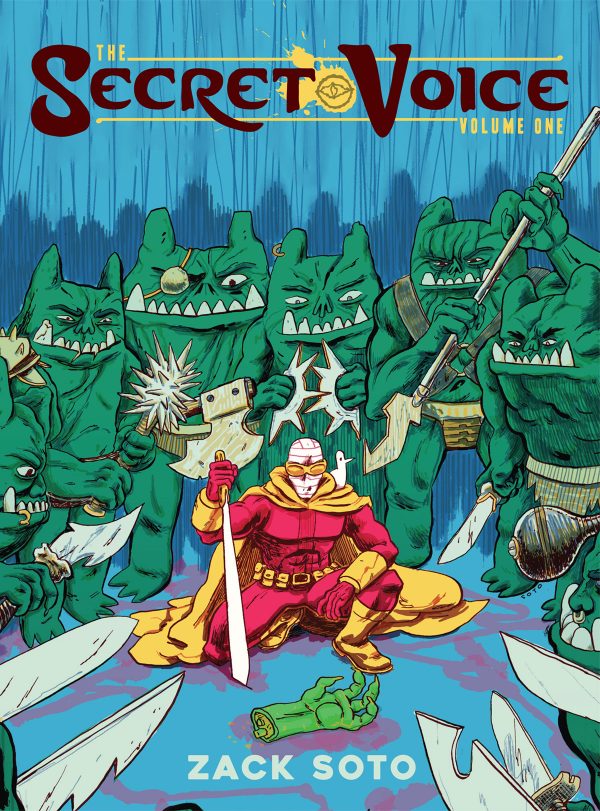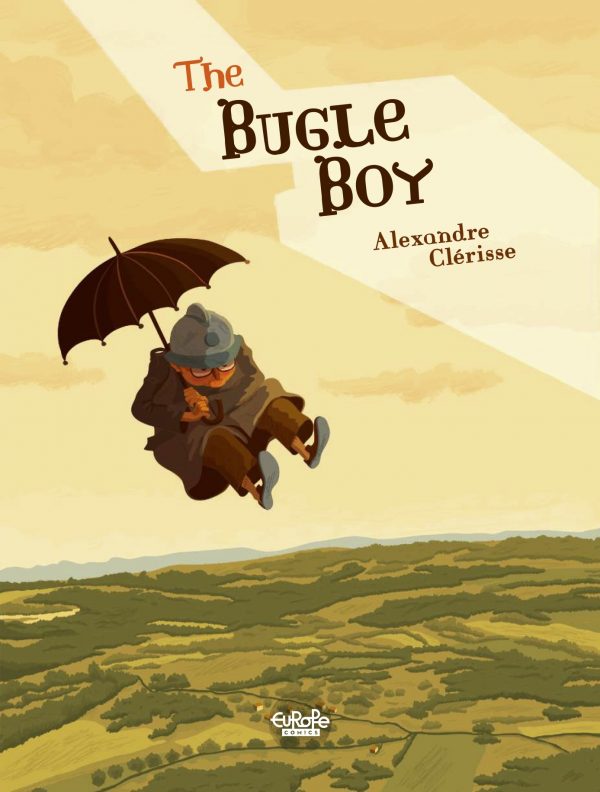The Bugle Boy
By Alexandre Clérisse
Europe Comics
Inspired by his grandfather Marcel, who was a French soldier and prisoner of war in World War II, but also who, most importantly, lost his bugle, French cartoonist Alexandre Clérisse’s seriocomic The Bugle Boy takes the real-life elements and uses them for an insightful examination of how we tend to look at the past but skew its reality with stories and circumstances that we need to hear.
A chance encounter with an old bugle at a flea market gets 85-year-old Marcel thinking about the bugle he lost before a battle as the Germans invaded France. His tangent continues following a visit from his granddaughter, and he catches a lift to Gleux-les-Lure, where the incident with his bugle took place. When Marcel gets there, he’s faced with other people’s perception of his own experience, and people’s penchant for shaping facts into convenient legends at the expense of the personal lives that are involved.
Clérisse approaches The Bugle Boy more as a humorous romp than a grim, heart-breaking drama, with Marcel bickering his way through the modern world, and clashing with his granddaughter, whose attitudes are far removed from his own. Things only dip towards seriousness when Marcel gets to Gleux-les-Lure and Clérisse drives his wider point home but doesn’t forget where these ideas are placed, making for a lively and humorous finale.
Clérisse’s art serves the tone of the presentation well. With a charming Golden Books flatness, it evokes both nostalgia and whimsy that place the flashbacks to Marcel’s World War II experience in a lighter emotional range. That’s fine for the point being made, since this is all about memory, and the art serves Marcel’s fondness for the time as well as the readers’ vision of 1940s France, even as the Nazis move in on it. As the representation of Marcel’s recollections, it’s also a visual reminder of the luminous emotion he gives to his experience.
The Secret Voice Volume One
By Zack Soto
Floating World Comics
Fortuitously released as Game of Thrones is winding down, and with more than a slight nod to The Lorax, Zack Soto’s first volume of The Secret Voice contains elements of both — political and war intrigue mixed with some foreboding ecological lessons — with some Lord of the Rings thrown in for good measure. But The Secret Voice also contains the extra bonus of Soto’s originality making it far more than just the sum of those parts, and feeling much more enlightened than Lord of the Rings and Game of Thrones.
The world is falling to the rampage of the Smog Emperor, this story’s Onceler, who conquers territory and turns it into a polluted nightmare. On a mission to gather support from the Trolls and the Forest Folk, an agent of the Red College, the bandaged and mystical Doctor Galapagos faces victory and disaster as he makes his way back home to make his report and face the next phase of the Smog Emperor’s conquest.
Lurking in the background is a meticulously-fashioned, complex world of Soto’s creation, but while he references this aspect throughout in order to acclimate the reader, he doesn’t indulge in information dumps or any other convoluted explanations, preferring the knowledge to lodge itself in the reader’s brain more organically. This means that while he bides his time on a sensible delivery system for what could be overwhelming, he’s able to spend time on characters and giving you a reason to care about their place in this grand, potentially overwhelming epic. It’s the personal grounding that’s crucial in these fantasy epics and Soto pulls it off well.
And though this is a fantasy epic, it’s not mired in cliches. Soto takes great pains to offer inventive systems, creatures, contraptions, and more, that are intriguing in their originality. You might feel like you have some inkling where this war epic itself is headed, but the unique elements Soto places in it obstruct any worries of cliche and allow Soto to fashion a multi-faceted, engaging first volume that should entice readers to want to know more.









